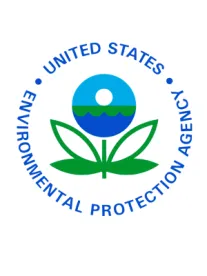On August 13, 2021, the U.S. Environmental Protection Agency (EPA) announced that it appointed two new members, Cheryl A. Murphy, Ph.D., Professor, Director of Center for PFAS Research, Michigan State University, and Veronica J. Berrocal, Ph.D., Associate Professor, Department of Statistics, University of California, to serve on the Federal Insecticide, Fungicide, and Rodenticide Act Scientific Advisory Panel (FIFRA SAP). The Chair and one other existing member also were reappointed. These appointments, effective July 30, 2021, were made by the EPA Administrator following nominations provided by the National Institutes of Health (NIH) and the National Science Foundation (NSF).
Members of the FIFRA SAP serve staggered terms of appointment, generally of three years. They possess expertise in scientific and technical fields relevant to human health and ecological risk assessment of pesticides. Members also have background and experiences that typically contribute to the diversity of scientific viewpoints on the Panel.
The FIFRA SAP serves as a primary scientific peer review mechanism of EPA’s Office of Pesticide Programs and is structured to provide independent scientific advice and recommendations to EPA on health and safety issues related to pesticides.
The FIFRA SAP is composed of the following scientists:
-
Robert E. Chapin, Ph.D., Chair
-
Affiliation: Former Senior Research Fellow (Retired), Pfizer Global Research and Development, Groton, Connecticut
-
Expertise: In vitro predictive toxicology; pre-conception reproductive toxicology
-
Education: Ph.D., Pharmacology, University of North Carolina, Chapel Hill; B.A., Biology, Earlham College
-
-
Veronica, J. Berrocal, Ph.D., Member
-
Affiliation: Associate Professor, Department of Statistics, University of California, Irvine, California
-
Expertise: Statistics; spatial and spatio-temporal statistics; statistical methods for environmental exposure assessment; spatial and environmental epidemiology
-
Education: Ph.D. Statistics, University of Washington, Seattle, Washington; M.Sc. Statistics, Michigan State University, East Lansing, Michigan; Laurea in Mathematics, Universita’ “La Sapienza,” Roma, Italy; and Degree of Etudes Approfondis (DEA) en Mathematiques, Universite’ “Joseph Fourier,” now part of Universite’ Grenoble Alpes, Grenoble, France
-
-
Jeffrey R. Bloomquist, Ph.D., Member
-
Affiliation: Professor of Entomology, Entomology and Nematology Department, Emerging Pathogens Institute, University of Florida, Gainesville, Florida
-
Expertise: Chemistry, human and insect neurophysiology, neurochemistry, insecticide toxicology, mode of action, and resistance; including studies of comparative neurotoxicology and environmental Parkinsonism
-
Education: Ph.D. Entomology, University of California, Riverside, California; M.S. Entomology, Mississippi State University, Mississippi; B.S. Entomology, Purdue University, Indiana; and Postdoctoral appointment in Insecticide Toxicology, Cornell University, New York
-
-
Gaylia Jean Harry, Ph.D., Member
-
Affiliation: Group Leader, Neurotoxicology Laboratory, National Toxicology Program, National Institute of Environmental Health Sciences (NTP/NIEHS), Research Triangle Park, North Carolina
-
Expertise: Mode of action of environmental agents on the nervous system with focused interest on the developing nervous system, neurotoxicology, neuropathology, behavioral assessments, neuroinflammation, and developmental processes using in vivo and in vitro models
-
Education: Ph.D. Experimental Psychology, Virginia Commonwealth University; M.S. Psychology, Virginia Commonwealth University; and B.S. Psychology, Virginia Commonwealth University, Richmond, Virginia
-
-
Cheryl A. Murphy, Ph.D., Member
-
Affiliation: Professor, Director of Center for PFAS Research, Michigan State University, East Lansing, Michigan
-
Expertise: Ecological Toxicology, Adverse Outcome Pathways, Fish Physiology, Behavior
-
Education: Ph.D. Department of Oceanography and Coastal Sciences, Louisiana State University, Baton Rouge, Louisiana; M.S. Physiology and Cell Biology, University of Alberta, Edmonton, Alberta; and BSc (Honors) Marine Biology, Dalhousie University, Halifax Regional Municipality, Nova Scotia
-
-
Rebecca L Smith, D.V.M., Ph.D., Member
-
Affiliation: Assistant Professor, Department of Pathobiology, College of Veterinary Medicine, University of Illinois, Urbana-Champaign, Illinois
-
Expertise: Epidemiologic research on longitudinal data analysis and mathematical modeling of diseases for purposes of prediction and control, with a focus on One Health
-
Education: Ph.D. Epidemiology, Cornell University; M.S. Biosecurity and Risk Analysis, Kansas State University. D.V.M. Cornell University; B.A. Biology, Gustavus Adolphus College
-
-
Clifford P. Weisel, Ph.D., Member
-
Affiliation: Professor, Rutgers University, Piscataway, New Jersey
-
Expertise: Exposures to chemical agents; multi-route exposures to environmental contaminants; the association between exposure and adverse health effects; utilization of sensors for continuous exposure measurement; and development and application of biomarkers of exposure
-
Education: Ph.D. Chemical Oceanography, University of Rhode Island; M.S. Analytical Chemical, University of Rhode Island; and B.S. Chemistry, State University of New York at Stony Brook
-
Additional biographical details on the current members is available here.
Commentary
The FIFRA SAP has been an important element of EPA’s pesticide program scientific review procedures. The pesticide program has been able to use the FIFRA SAP as an outside review element to add credibility to its key scientific policies over the decades since it was created as part of the FIFRA legislative amendments in the 1970s. (In fact, the FIFRA SAP was created before the EPA-wide Science Advisory Board (SAB).) Also important is the statutory provision, added as part of the Food Quality Protection Act in 1996, to establish a Science Review Board made up of 60 scientists “who shall be available to the Scientific Advisory Panel to assist in reviews conducted by the Panel.” Together, the goal is to have a range of scientific discipline expertise available to offer outside peer review of the wide range of science questions that confront EPA when evaluating pesticide registration issues.





 />i
/>i

